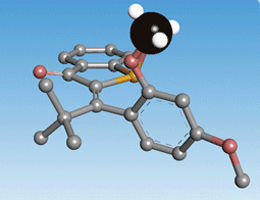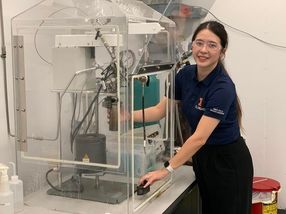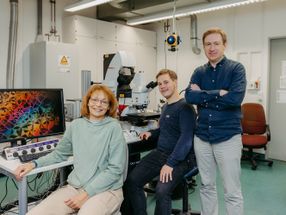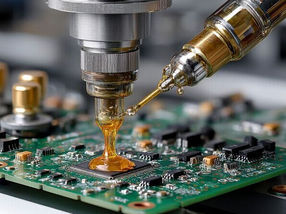Pirouetting in the sunlight
A new class of molecular motors
Advertisement
molecular motors are synthetic chemical compounds that can convert externally supplied energy into mechanical motion. Such molecules, which are specifically designed to execute directional movements in response to a specific stimulus, are an essential precondition for the construction of useful nanomachines. Among the most promising types of molecular ‘engine blocks’ are substances whose three-dimensional conformation can be altered by exposure to light. “However, all the light-activated molecular motors described so far utilize UV light as a power source. But this severely restricts their potential range of application, as its high-energy photons may have deleterious effects on the nanomachinery as a whole,” explains Dr. Henry Dube, who is at LMU’s Department of Chemistry. Dube and his colleagues have now found a way around this obstacle: They have developed a novel class of molecular rotor that can be driven by visible light – which is less energetic than UV radiation and therefore less likely to compromise the operation of more complex systems.
The basis of the newly developed molecular motor is the molecule hemithioindigo. Hemithioindigo is a photoswitch, which is made of two organic molecules, which are connected by a carbon double bond. Exposure to light alters the structure of hemithioindigo, causing it to rotate about the central double bond. In contrast to the light-activated motors previously described, rotation of the hemithioindigo-based motor requires the less energetic visible light – and it rotates extremely fast: The researchers demonstrated that the molecule rotates – unidirectionally – about 1000 times per second at room temperature. “We ourselves were surprised that the motor works so well, for it is known that many molecular motors do not steadily rotate in one direction, but also revolve in the opposite sense to some degree,” says Dube. “Given the complexity involved in the design of such motor molecules, it is really astonishing to that we gained complete control over the direction of rotation at the first attempt.”
The fact that the new compound can be powered by visible light also means that it is much more versatile than previously described light-powered molecular motors. “But we have a long way to go before molecular motors can be integrated into more complex nanomachines to perform functions that are more complicated than the directed rotatory movement we have now demonstrated,” Dube points out. “The long-term goal in this field is the miniaturization of working machines down to the size range of organic molecules. Such nanomachines would provide unprecedented precision in the processing or targeted modification of matter at the molecular scale, opening up entirely new opportunities in many areas of research,” he adds.

































































